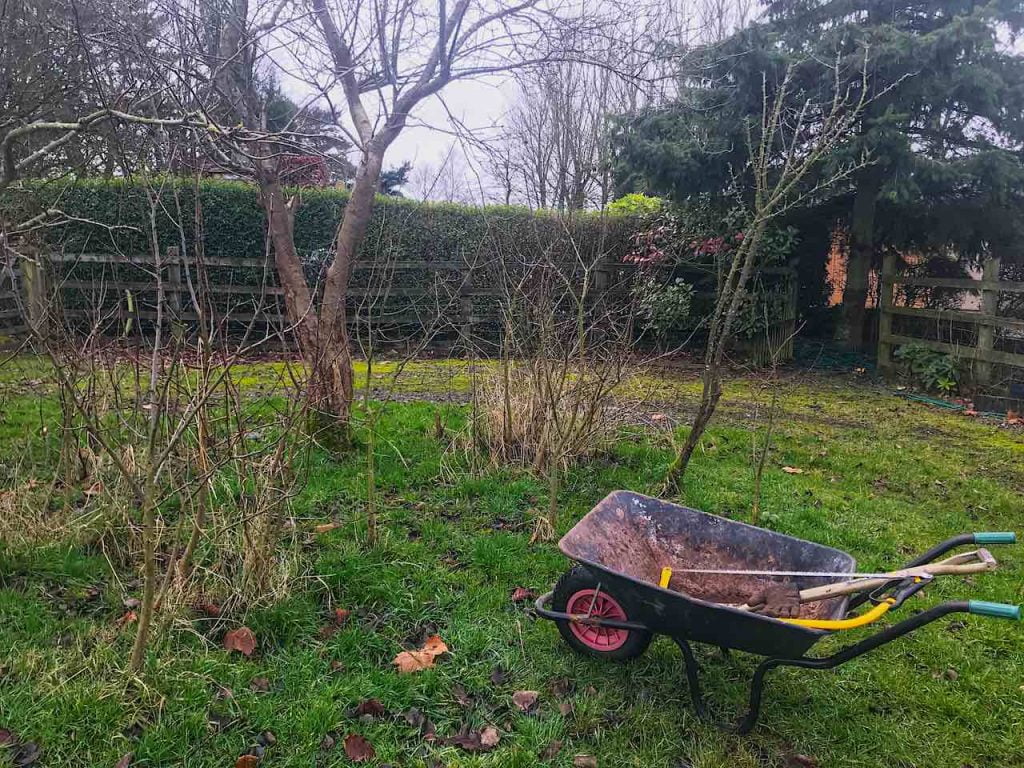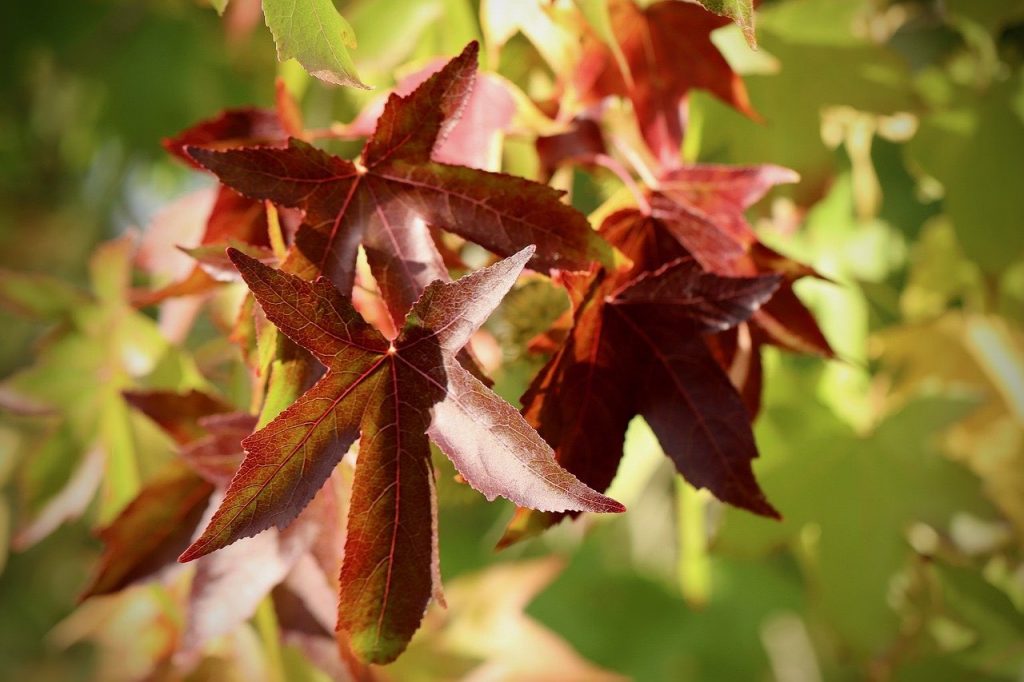January Garden Tour; Tree Pruning & Seed Stratification
 Lee Burkhill: Award Winning Designer & BBC 1's Garden Rescue Presenters Official Blog
Lee Burkhill: Award Winning Designer & BBC 1's Garden Rescue Presenters Official Blog

I'm a glass half full kinda guy. I try to refuse, where possible, to let myself end up in negative cycles. The media, in particular, like to theme January as the month of personal debasement. To try and amplify the parts of your life you're not happy with.
So much so there's now a Blue Monday, which apparently is the most depressing Monday of the year. Lose weight. Divorce your partner. Buy more lycra and train harder. I may be a very small cog in a big machine but I refuse to go along with this on my blog. This is your safe space away from the January vultures that circle.
January may be dark and your bank balance probably low but as gardeners, there's plenty of free healthy alternative activities to bring us some optimism and personal achievements. None of which involves meal plans, crying into bank statements or joining in with negative media campaigns. Let's get cracking!
Saplings are a perfect way to bulk up your garden for free in most cases. Certain trees are pretty effective at reproducing once established in setting seed. These seedlings grow into what we call saplings or tiny single-stemmed (or is that trunked) trees. You may have saplings in your own garden or in neighbouring gardeners. So keep your eyes open and get ready to ask if you can rehome them.

Most saplings grow in close proximity to the mother tree meaning two things. 1) They are relatively easy to identify 2) They will end up crowded and weak if left to grow. So most tree owners will want to remove them. Meaning they are an excess which we can help out with! You may also notice saplings in woodlands and in verges. Whilst I love the idea of rehoming these please make sure you always ask the landowner before digging them up. Some woodland areas are protected for conservation so again double if not triple check. The best saplings to use are those in friends or neighbours gardens.
In my garden, I've inherited a Damson orchard of three Damson trees. Last year I noticed a number of sapling emerging beneath them. I made a note to rehome these this winter. So I've been really excited for January to arrive to start planting out my 'free trees''.

Just like bare root trees saplings are best moved in the middle of winter when their leaves have dropped (for deciduous plants) and they are dormant. Evergreens can also be moved at this time. Using a spade dig up the sapling. I tend to make sure I dig at least 30cm away from the main stem to make sure I don't slice through its roots. I take care to fully loosen around the sapling and then lift. You can remove the soil if you like or leave it on and backfill the excavated hole left behind. If taking from a friends house I'd get it in a bag or bucket quickly. Keeping it damp and replanting ASAP.
Depending on the trees ultimate size and height, which can be found online or on the Woodland trusts handy app for tree identification, choose a suitable location for your new tree.
I've moved my Damsons to the top of my garden where I planted by grafted Apple trees last year. This is my mini orchard in the making. You don't need an orchard or acres of garden play space even a small town garden can benefit from a tree or two. Providing the correct species and ultimate size is chosen. With smaller trees make sure you stake them once you have moved them as you will have disturbed their roots and anchoring. So they will need some more support whilst they reestablish.
You can also do this with sapling hedges too which is great if part of your hedge needs thickening up or has become damaged. So keep your eyes open for tiny versions of your trees and shrubs as these saplings can help you bulk up your garden for free!
Did you know that you can take my course and learn how to become a Garden Ninja yourself? Click here for details
January is also a great time for, you guessed it planting bare root trees. In the Exploding Atom Garden, I've noticed a vacant space that in the winter looks a bit lost. This is the great thing about winter gardening nothing will expose design weaknesses and flaws like a winter garden.
At the far left edge of the garden, there's a space in the design with a distant view. A bit like a borrowed view it actually pulls your attention away from the garden. So I want to help focus visitors to the garden, not the distant phone pylons. As a garden design trick, I'm planting a tall specimen tree there which once it grows will help give a boundary to the garden and push peoples views to the right. Almost a bookend to this part of the garden near the hedge I planted when I first moved in.

I've decided to go big or go home with my tree choice for this space by picking one of my bucket list trees; a Liquidamber (American Sweet Gum). I've picked Liquidambar styraciflua 'Worplesdon'. It will grow upwards of 20m over 20 years so is a real impact tree. I'll keep it in check through with my winter pruning as always. The beauty of this specimen is its Autumn colour. It turns blood red then orange in the Autumn. This fits in nicely with the Exploding Atom Garden planting scheme as well. Watch the January Garden Tour Video to find out more!

If you already have established trees now is also the time to give them a neaten up. If you're struggling with shade being cast by trees this guide on Crown Lifting may help you!
Seed sowing is one of the most magical of gardening activities. From tiny seeds to small shoots the activity of growing your own allows you to propagate any plant you wish. Most seeds are sown in spring when the earth and environment warm-up and if you've followed my gardening without plastic series you can see first hand just what wonderful specimens you can grow at a low cost.

Some seeds are a bit trickier to grow and require special conditions to trigger their germination. One of these is stratification. The process of mimicking a seed enduring winter before the spring warms them up. Myrrhis odorata (Sweet Cicely) is one of these. I've never had any luck direct sowing in spring so this year I'm sowing them early January in a cold frame to trigger the stratification process. You can also chill your seeds in a fridge for a few weeks before planting. It's rare for most commercial seeds to require stratification so you only need to do this for very select species.

I've sown these seeds in a wooden seed tray in a mix of 50/50 compost to leaf mould. I then have placed them in an unheated cold frame outside to start to stratification process. I've watered them and will see if come spring they have germinated. I'll be charting the germination of these (fingers crossed) over the next few vlogs so make sure you check back soon.
Although it may feel like the media is out to bring you down in January, by stepping outside you can help give your mind a quick holiday from it all. Whether its planting new trees, moving saplings or experimenting with seed stratification there's plenty of excitement and optimism in the garden during January. The garden is always there for you and doesn't judge you if you don't stick to a schedule or you've not managed to burn off the Christmas mince pies yet!

I love to hear from my Ninja followers so do get in touch with your garden stories or questions. You can Tweet, Facebook or Instagram me. You can also follow me on Youtube where I’ve got plenty of garden guide vlogs!
Most of all...Happy Gardening!


You must be logged in to post a comment.






JOIN THE NINJAS

Be the first in line for new Guides, Discount codes and Offers
The very information I need, thanks for it.